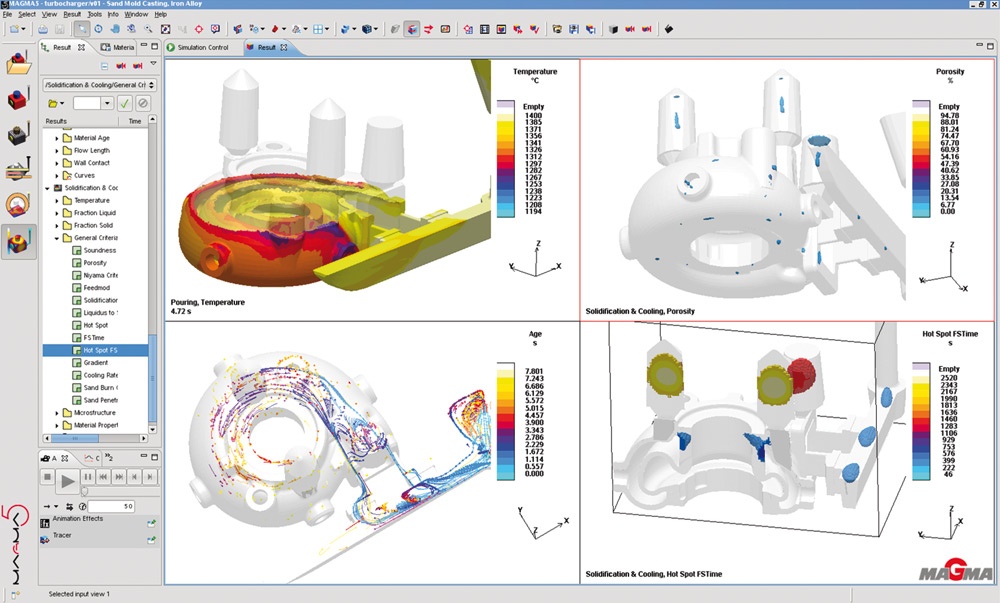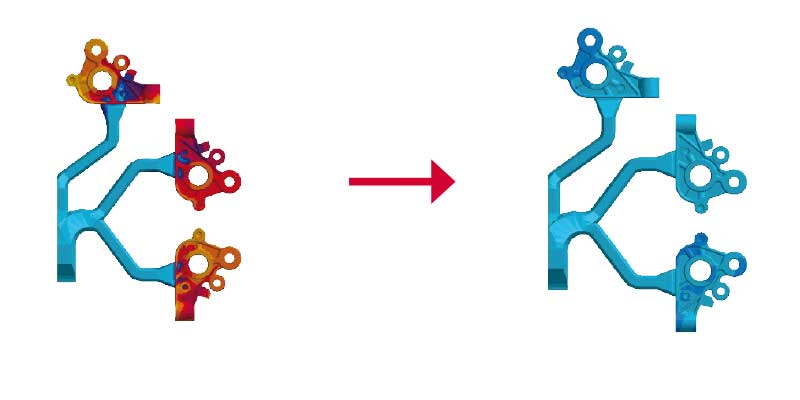| Developer(s) | Computational Algebra Group, School of Mathematics and Statistics, University of Sydney |
|---|---|
| Stable release | |
| Operating system | Cross-platform |
| Type | Computer algebra system |
| License | Cost recovery (non-commercial proprietary) |
| Website | magma.maths.usyd.edu.au |
Magma is a computer algebra system designed to solve problems in algebra, number theory, geometry and combinatorics. It is named after the algebraic structuremagma. It runs on Unix-likeoperating systems, as well as Windows.
Introduction[edit]
Magma is produced and distributed by the Computational Algebra Group within the School of Mathematics and Statistics at the University of Sydney.
In late 2006, the book Discovering Mathematics with Magma was published by Springer as volume 19 of the Algorithms and Computations in Mathematics series.[3]

The Magma system is used extensively within pure mathematics. The Computational Algebra Group maintain a list of publications that cite Magma, and as of 2010 there are about 2600 citations, mostly in pure mathematics, but also including papers from areas as diverse as economics and geophysics.[4]
The biggest benefit of 5G networks is the software-centric architecture. Powered by open source and cloud-native design principles, open 5G will have an order-of-magnitude lower OPEX. To that effect, software underpinning everything we build at FreedomFi is open source and all sales proceeds are reinvested towards making Magma software project better for all. Sep 06, 2021 The pollution, emissions and clean-up costs of plastic produced in 2019 alone could be $3.7 trillion, according to a report released Monday by wildlife charity WWF, warning of the environmental.
History[edit]
The predecessor of the Magma system was named Cayley (1982–1993), after Arthur Cayley. Fie titan manual 380 cal.
Magma was officially released in August 1993 (version 1.0). Version 2.0 of Magma was released in June 1996 and subsequent versions of 2.X have been released approximately once per year.
Magma Software Cost Per
In 2013, the Computational Algebra Group finalized an agreement with the Simons Foundation, whereby the Simons Foundation will underwrite all costs of providing Magma to all U.S. nonprofit, non-governmental scientific research or educational institutions. All students, researchers and faculty associated with a participating institution will be able to access Magma for free, through that institution.[5]
Mathematical areas covered by the system[edit]
- Magma includes permutation, matrix, finitely presented, soluble, abelian (finite or infinite), polycyclic, braid and straight-line programgroups. Several databases of groups are also included.
- Magma contains asymptotically fast algorithms for all fundamental integer and polynomial operations, such as the Schönhage–Strassen algorithm for fast multiplication of integers and polynomials. Integer factorization algorithms include the Elliptic Curve Method, the Quadratic sieve and the Number field sieve.
- Magma includes the KANT computer algebra system for comprehensive computations in algebraic number fields. A special type also allows one to compute in the algebraic closure of a field.
- Module theory and linear algebra
- Magma contains asymptotically fast algorithms for all fundamental dense matrix operations, such as Strassen multiplication.
- Magma contains the structured Gaussian elimination and Lanczos algorithms for reducing sparse systems which arise in index calculus methods, while Magma uses Markowitzpivoting for several other sparse linear algebra problems.
- Lattices and the LLL algorithm
- Magma has a provable implementation of fpLLL,[6] which is an LLL algorithm for integer matrices which uses floating point numbers for the Gram–Schmidt coefficients, but such that the result is rigorously proven to be LLL-reduced.
- Commutative algebra and Gröbner bases
- Magma has an efficient implementation of the Faugère F4 algorithm for computing Gröbner bases.
- Magma has extensive tools for computing in representation theory, including the computation of character tables of finite groups and the Meataxe algorithm.

The Magma system is used extensively within pure mathematics. The Computational Algebra Group maintain a list of publications that cite Magma, and as of 2010 there are about 2600 citations, mostly in pure mathematics, but also including papers from areas as diverse as economics and geophysics.[4]
The biggest benefit of 5G networks is the software-centric architecture. Powered by open source and cloud-native design principles, open 5G will have an order-of-magnitude lower OPEX. To that effect, software underpinning everything we build at FreedomFi is open source and all sales proceeds are reinvested towards making Magma software project better for all. Sep 06, 2021 The pollution, emissions and clean-up costs of plastic produced in 2019 alone could be $3.7 trillion, according to a report released Monday by wildlife charity WWF, warning of the environmental.
History[edit]
The predecessor of the Magma system was named Cayley (1982–1993), after Arthur Cayley. Fie titan manual 380 cal.
Magma was officially released in August 1993 (version 1.0). Version 2.0 of Magma was released in June 1996 and subsequent versions of 2.X have been released approximately once per year.
Magma Software Cost Per
In 2013, the Computational Algebra Group finalized an agreement with the Simons Foundation, whereby the Simons Foundation will underwrite all costs of providing Magma to all U.S. nonprofit, non-governmental scientific research or educational institutions. All students, researchers and faculty associated with a participating institution will be able to access Magma for free, through that institution.[5]
Mathematical areas covered by the system[edit]
- Magma includes permutation, matrix, finitely presented, soluble, abelian (finite or infinite), polycyclic, braid and straight-line programgroups. Several databases of groups are also included.
- Magma contains asymptotically fast algorithms for all fundamental integer and polynomial operations, such as the Schönhage–Strassen algorithm for fast multiplication of integers and polynomials. Integer factorization algorithms include the Elliptic Curve Method, the Quadratic sieve and the Number field sieve.
- Magma includes the KANT computer algebra system for comprehensive computations in algebraic number fields. A special type also allows one to compute in the algebraic closure of a field.
- Module theory and linear algebra
- Magma contains asymptotically fast algorithms for all fundamental dense matrix operations, such as Strassen multiplication.
- Magma contains the structured Gaussian elimination and Lanczos algorithms for reducing sparse systems which arise in index calculus methods, while Magma uses Markowitzpivoting for several other sparse linear algebra problems.
- Lattices and the LLL algorithm
- Magma has a provable implementation of fpLLL,[6] which is an LLL algorithm for integer matrices which uses floating point numbers for the Gram–Schmidt coefficients, but such that the result is rigorously proven to be LLL-reduced.
- Commutative algebra and Gröbner bases
- Magma has an efficient implementation of the Faugère F4 algorithm for computing Gröbner bases.
- Magma has extensive tools for computing in representation theory, including the computation of character tables of finite groups and the Meataxe algorithm.
- Magma has a type for invariant rings of finite groups, for which one can primary, secondary and fundamental invariants, and compute with the module structure.
- Finite incidence structures
See also[edit]
References[edit]
Magma Software Download
- ^'Summary of New Features in Magma V2.25'.
- ^'Change Log for V2.25-5'.
- ^'Discovering Mathematics with Magma'.
- ^'Published Research Citing Magma'.
- ^http://magma.maths.usyd.edu.au/magma/simons_details
- ^John Cannon (July 2006). 'Magma 2.13 release notes'.
Magma Software Casting
External links[edit]
Magma Software Cost Per
- Magma's High Performance for computing Gröbner Bases (2004)
- Liste von Publikationen, die Magma zitieren

